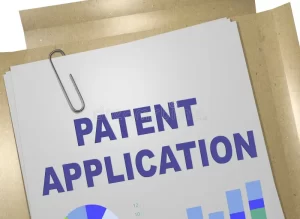
The Role of Non-Disclosure Agreements in Patent Applications
Non-Disclosure Agreements (NDAs) are an essential tool for inventors and businesses during the patent application process. These agreements ensure that sensitive information about an invention remains confidential while it is being developed or disclosed to potential partners, investors, or collaborators. In this blog, we will delve into the significance of NDAs in patent applications, how they work, and why they are crucial for protecting your intellectual property.
What is a Non-Disclosure Agreement (NDA)?
A Non-Disclosure Agreement (NDA) is a legally binding contract between two or more parties that outlines confidential information shared between them and restricts the disclosure of that information to unauthorized third parties. NDAs are commonly used in business relationships where proprietary information or trade secrets are involved, ensuring that sensitive details are kept private.
In the context of patent applications, an NDA can play a crucial role in safeguarding the details of an invention before it is publicly disclosed. When inventors disclose their ideas to others, such as potential business partners or investors, an NDA ensures that these parties do not use or share the invention without the inventor’s consent.
Why are NDAs Important in the Patent Application Process?
- Protecting Your Idea Before Filing Before filing for a patent, an inventor may need to share their invention with others to seek feedback, investment, or partnerships. During this stage, it is critical to protect the invention from being stolen or copied. NDAs ensure that the person receiving the information is legally bound to keep it confidential.
Without an NDA, there is a risk that others could take the idea, file a patent for it, or use the information to create a competing product. By having the recipient sign an NDA, the inventor gains legal protection against such actions, thus reducing the risk of their invention being misappropriated.
- Maintaining Patentability One of the key requirements for a patent application is that the invention must be novel or non-obvious. If an inventor publicly discloses their invention before filing a patent, they may lose the novelty requirement and render the patent application invalid. However, under certain conditions, an NDA can provide a mechanism to share the invention with others without triggering a public disclosure that could impact patentability.
For example, an NDA can allow inventors to have confidential discussions about their invention with collaborators or industry experts without the fear of the invention becoming public knowledge. This is essential for protecting the invention’s status as a new and novel idea.
- Preventing Idea Theft or Misuse Unfortunately, not everyone has good intentions, and there is a risk that people may attempt to steal or misuse an inventor’s idea. Whether it’s a potential business partner or a co-inventor, having an NDA in place ensures that the person receiving the confidential information understands their legal obligations not to disclose or use the information without authorization.
If a person breaches the NDA by disclosing or using the idea without permission, the inventor has legal grounds to pursue damages or injunctive relief. This provides peace of mind for inventors, knowing that their intellectual property is protected during the development phase.
- Facilitating Discussions with Investors or Partners Securing funding or strategic partnerships is often a crucial step in the patenting process. However, before you share your invention with potential investors or partners, it is vital to ensure that your intellectual property is safeguarded. An NDA ensures that investors or partners cannot reveal your idea to competitors or use it for their gain.
By using an NDA, inventors can feel more comfortable discussing the details of their invention, its potential market, and their business plan with stakeholders, knowing that the confidential information is legally protected. This is especially important in industries where competition is fierce, and the risk of idea theft is high.
- Protecting Trade Secrets For some inventions, patenting may not be the best option, or an inventor may want to keep certain aspects of the invention a secret. In such cases, an NDA can help protect trade secrets and confidential business information that are not disclosed in a patent application. By keeping these details under wraps, inventors can maintain a competitive edge in the marketplace.
Trade secrets can include processes, formulas, designs, and other proprietary information that give a business a competitive advantage. An NDA can prevent others from sharing or using these secrets for their benefit, ensuring that the inventor retains control over their intellectual property.
Key Elements of a Non-Disclosure Agreement
- Definition of Confidential Information The NDA should clearly define what constitutes confidential information. This includes specifying what is considered proprietary, such as designs, formulas, prototypes, software code, or other invention-related materials. The clearer the definition, the easier it is to enforce the agreement in case of a dispute.
- Obligations of the Parties The NDA should outline the responsibilities of both parties regarding the use of confidential information. This includes specifying that the recipient cannot disclose or use the information for any purpose other than the one agreed upon in the contract. It may also state the duration of the confidentiality obligation, such as a specified period of time or until the information is no longer deemed confidential.
- Exclusions from Confidentiality NDAs often contain exclusions, specifying certain information that is not covered by the confidentiality agreement. For instance, information that is already public knowledge, independently developed, or disclosed by a third party is generally excluded from the agreement.
- Consequences of Breach An NDA should detail the consequences of a breach of the agreement. This can include financial penalties, legal action, and other remedies available to the disclosing party in the event of a violation. Having these provisions in place helps deter breaches and ensures that both parties understand the seriousness of the agreement.
- Duration of the Agreement NDAs can be either short-term or long-term agreements, depending on the nature of the invention and the relationship between the parties. For patent applications, the NDA should last long enough to protect the idea until a patent is filed and the inventor’s intellectual property rights are secured.
How to Use an NDA in the Patent Application Process
- Before Disclosing to Third Parties Before sharing any confidential information related to your invention, ensure that an NDA is signed by all parties involved. This includes business partners, investors, contractors, and anyone else who will have access to your intellectual property. The NDA should be signed before any discussions or meetings take place.
- During Prototyping or Development If you are working with a team or outsourcing the development of your invention, an NDA can protect your ideas during the prototyping phase. This ensures that your confidential information remains protected while you work on refining your invention.
- While Seeking Investors When you approach investors for funding, be sure to have an NDA in place. Investors may ask for detailed information about your invention, business plan, and future projections, so it’s important to safeguard your intellectual property before sharing this sensitive data.
- Post-Patent Filing After filing a patent, you can continue to use NDAs when discussing the invention with third parties. This helps protect your idea even as you wait for the patent to be granted.
Conclusion
Non-Disclosure Agreements (NDAs) are crucial in protecting intellectual property during the patent application process. By ensuring that sensitive information about an invention remains confidential, NDAs prevent idea theft, maintain the novelty of the invention, and safeguard the inventor’s rights. Whether you’re discussing your invention with business partners, investors, or collaborators, using an NDA is an essential step in securing your intellectual property and ensuring that your invention stays protected throughout its development.
